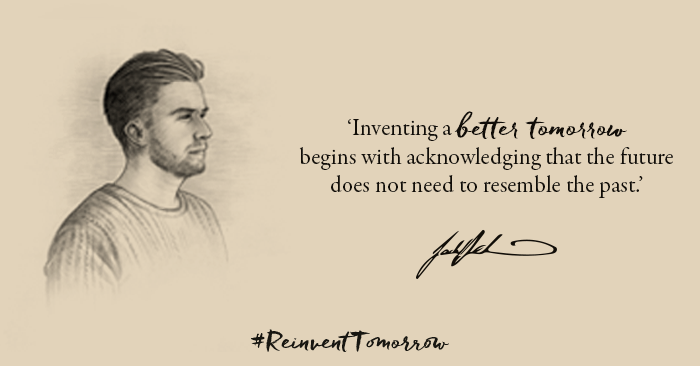This blog post is adapted from Jack Delosa’s new book, Unwritten – Reinvent Tomorrow. A book about innovation, entrepreneurship and living a life on purpose.
We live in a world that finds comfort in familiarity. Too often we look to the past to examine what is tried and proven in order to feel comfortable about progressing forward.
History, in this instance, has served only to limit our thinking and to accept ‘what is’, rather than imagine ‘what could be’.
For those who wish to truly pioneer and invent new things, history can instead provide great insight into how to put innovation into action, provided we are not using it to confine our thinking but rather inform our imagination.
The interesting paradox here is that those who invent new things are often great admirers of history while also having a healthy disrespect for what has already been achieved. They use the past not as a boundary, but as the very frontier upon which to innovate.
The innovator’s dilemma is that when you are truly innovating, by definition there will be little evidence to support your thinking. If you could point to tried and tested models to validate your conclusions, what you are envisioning is not innovative; it is simply an improvement of ‘what already is’.
Thinking in terms of improving ‘what already is’ is what psychology calls ‘analogical reasoning’. More simply put, reasoning by analogy is to think in terms of ‘this is likely to work because it is similar to that’ or ‘what we are planning to do in the future is likely to work because it is similar to what has been done in the past’.
Reasoning by analogy is the enemy of innovation. It encourages us to take the ‘safe’ option, because what we’re proposing has worked before, rather than wrestle with the uncertainty of doing something new.
To create something truly original therefore requires a deep sense of courage and vision.
In his book Creativity, Inc., Ed Catmull quotes his friend and colleague Andrew Stanton, a movie producer with Pixar Studios, as saying:
“It’s gotten to the point that we get worried if a film is not a problem child right away. It makes us nervous. We’ve come to recognise the signs of originality. We have begun to welcome the feeling of, ‘Oh, we’ve never had this exact problem before – and it’s incredibly recalcitrant and won’t do what we want it to do.’ That’s familiar territory for us – in a good way.”
In this sense, those seeking to truly innovate find reassurance in the discomfort of originality.
This is not to suggest that innovation requires us to make reckless and wild decisions about what direction to take in the future. Rather, great innovation is often the result of good judgement and a calm wisdom that has been steadily acquired over many years.
This judgement comes from hard-fought experience, and that experience is the outcome of learning from the many ‘bad judgements’ made on our journey to create something new.
Mastering innovation is the pursuit of a lifetime – so best to start now.
Those who strive to create new things are quickly confronted by a world that uses the achievements of yesterday to define what is possible today.
When your plans are not supported by data and the reassurance that evidence provides, you can find yourself being ridiculed, criticised or even completely ignored, by those who simply do not believe what you are setting out to do is plausible.
They all too easily close the door on your way of thinking because it’s new, it’s unfamiliar and it challenges the rules, in which they are invested. The battle against conventional wisdom therefore becomes the innovator’s greatest encounter.
Inventing a better tomorrow begins with acknowledging that the future does not need to resemble the past. History holds many examples of individuals who said ‘The future is going to look different to how we thought’, and often they were right.
We need to resist the temptation to be confined by the past, but rather use it as a foundation upon which to stand, in order to get a glimpse into the future.

